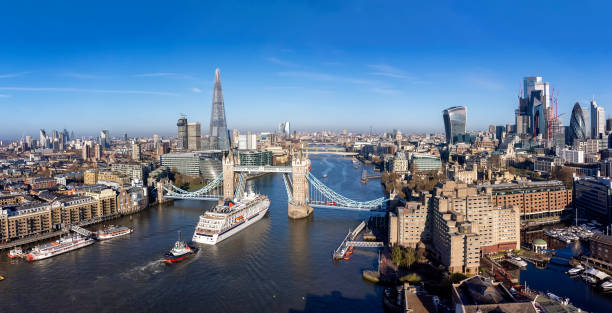Take a look inside Europe’s most stunning cathedrals.
Europe’s most important Cathedrals were built out of an unyielding desire for proof of their devotion. They all have different styles, ages, and sizes but share the same goal. Although they served many purposes over the years – like the seats for Bishops, houses and worship, learning centers, etc. – they still serve as a link to our collective past regardless of whether or not we share the same faith.
These religious centers have a major function: to preserve architecture and art for future generations. You can find the finest art pieces by some of Europe’s most renowned artists within many of these institutions. It is imperative to visit as many of these institutions as possible, especially when they are located in some of the most innovative buildings ever built by humans.
Here’s a glimpse inside some of Europe’s most impressive cathedrals, from England to the Balkans.
Berlin Cathedral, Germany
The Berlin Cathedral (Berliner Dom), the largest Protestant church in Germany, has barely survived its turbulent past.
The building was destroyed by bombing and burning during World War Two. Funds are being raised to repair the damage, but the interior was completely restored between 1975-2002. The central nave, the magnificent expanse beneath the central dome, has been made more majestic. The dome’s interior is illuminated by strategically placed windows thanks to polished marble pillars that guide you up to the dome interior.
Sofia, Bulgaria, Alexander Nevsky Cathedral
The Alexander Nevsky Cathedral (Sveti Altazar Nevski), a Neo-Byzantine icon in Sofia, symbolizes Bulgaria. It was built to commemorate the victory of Bulgaria over the Ottoman Empire in the 19th Century. The name is a tribute to a Russian prince-turned saint from the 13th Century.
It is brimming with architectural elements from around the globe, including Brazilian onyx, Indian alabaster, and Italian marble. The cathedral’s basement has a small museum that houses one of Europe’s most extensive collections of Byzantine art and icons. But the crown jewel is its collection of intricate Venetian mosaics.
Basilica of Saint Mark in the Patriarchal Cathedral, Venice, Italy
The iconic Piazza San Marco is surrounded by St Mark’s Basilica (Basilica Cattedrale Patriarcale di San Marco), which stands as a symbol for Venice. Although it has seen many changes, the oldest of which dates back to the 1st Century, the current building was built over a millennium.
It is covered in gold-ground mosaics. Unlike many other Italian churches, St. Mark’s has never been able to transition from mosaics to frescoes. This is due to the Venetian-made tiles that were used in their creation.
The massive central dome and the stunning result are a powerful testimony to Venice’s continuing place in the Catholic Church. It is also the home to many works stolen from other European religious sites, including those from the Hagia Sophia in modern Istanbul and Turkey.
Cathedral of Santa Maria of Palma (Mallorca, Spain)
The Cathedral of Palma is a prime example of the Catalan Gothic style. It was built on the site of an old mosque, which once belonged to the Moorish occupiers of Mallorca.
The Catedral-Basilica de Santa Maria de Mallorca is home to more than 60 stained glass windows. This nickname comes from the central rose window that shines multi-colored light through the main hall during the morning. The interior weight-bearing columns are not visible from the inside, as they support the structure from the outside.
Salzburg Cathedral, Austria
The current Salzburg Cathedral (Salzburger Dom) has been rebuilt, destroyed, demolished and rebuilt numerous times over the past two millennia. Its construction dates back to the late 12th Century.
The bright-white marble interior makes it the ideal backdrop for many frescoes created by Donato Mascagni or Ignazio Solari. Particularly noteworthy are the dome’s scenes depicting the Old Testament. The 14th-century font, in which Mozart was baptized in 1758, is also on display.




Post Comment